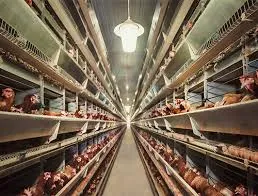Exploring the Benefits of Vacuum Machines for Efficient Food Packaging Solutions
Jul . 29, 2024 05:29 Back to list
Exploring the Benefits of Vacuum Machines for Efficient Food Packaging Solutions
The Importance of Vacuum Machines for Food Packaging
In the ever-evolving world of food preservation, vacuum machines stand out as a revolutionary solution that enhances the shelf-life and quality of various products. The food packaging industry is continuously seeking innovative methods to prolong freshness while maintaining flavor and nutritional value, and vacuum packaging has emerged as a frontrunner in this endeavor.
Vacuum packaging involves removing air from the package before sealing it tightly, thereby significantly reducing the presence of oxygen that can lead to spoilage. The basic mechanism of a vacuum machine operates by placing food items in a plastic bag or container, which is then sealed by sucking out the air. This process not only prevents the growth of aerobic bacteria and fungi but also minimizes oxidation, which is responsible for the degradation of color, flavor, and texture.
The Importance of Vacuum Machines for Food Packaging
In addition to enhancing longevity, vacuum machines also help retain the nutritional value of foods. Many vitamins and minerals are sensitive to air and light exposure, and vacuum sealing protects them from degradation. This method is particularly beneficial for fruits and vegetables, which can lose their nutritional content quickly when exposed to oxygen. By minimizing exposure to these elements, vacuum packaging helps ensure that consumers receive foods that are not only safe to eat but also nutritionally rich.
vacuum machine for food packaging

Moreover, vacuum machines can significantly improve the convenience of meal preparation. Pre-packaged vacuum-sealed meals can be easily stored and heated, making them a convenient option for busy individuals or families. The ability to portion food in advance also aids portion control, preventing overeating and reducing the likelihood of food wastage. As meal prepping becomes increasingly popular, vacuum machines are indispensable tools in keeping pre-prepared meals fresh and ready to eat.
From a sustainability perspective, vacuum packaging also plays a role in reducing environmental impact. By extending the shelf-life of food products and minimizing waste, vacuum machines contribute to more sustainable food consumption practices. This is increasingly important in a world where food waste is a significant contributor to greenhouse gas emissions. The use of vacuum technology in food packaging aligns with a growing consumer demand for sustainable practices in the food industry.
As with any technology, the choice of vacuum machines comes with considerations regarding cost and usability. There are numerous options available on the market, ranging from commercial-grade machines suited for large-scale operations to affordable models designed for home use. Users should consider their specific requirements, such as the volume of food to be packaged and the types of foods they commonly preserve, to select the most appropriate model.
In conclusion, vacuum machines for food packaging represent a significant advancement in food preservation technology. They offer numerous benefits, including extended shelf life, improved nutritional retention, enhanced convenience, and a reduced environmental footprint. As consumers become more health-conscious and environmentally aware, the importance of vacuum packaging in the food industry will continue to grow, making vacuum machines an essential tool for anyone involved in food preparation and preservation.
-
Hot Sale 24 & 18 Door Rabbit Cages - Premium Breeding Solutions
NewsJul.25,2025
-
Automatic Feeding Line System Pan Feeder Nipple Drinker - Anping County Yize Metal Products Co., Ltd.
NewsJul.21,2025
-
Automatic Feeding Line System Pan Feeder Nipple Drinker - Anping County Yize Metal Products Co., Ltd.
NewsJul.21,2025
-
Automatic Feeding Line System - Anping Yize | Precision & Nipple
NewsJul.21,2025
-
Automatic Feeding Line System - Anping Yize | Precision & Nipple
NewsJul.21,2025
-
Automatic Feeding Line System-Anping County Yize Metal Products Co., Ltd.|Efficient Feed Distribution&Customized Animal Farming Solutions
NewsJul.21,2025






